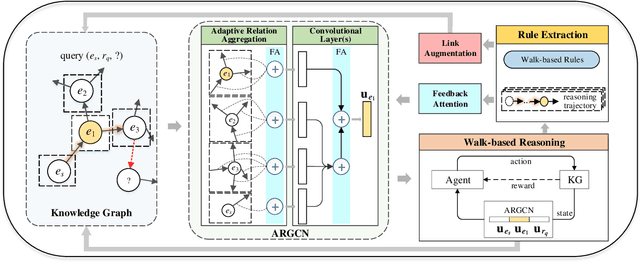Inductive Knowledge Graph Reasoning for Multi-batch Emerging Entities
Paper and Code
Aug 22, 2022



Over the years, reasoning over knowledge graphs (KGs), which aims to infer new conclusions from known facts, has mostly focused on static KGs. The unceasing growth of knowledge in real life raises the necessity to enable the inductive reasoning ability on expanding KGs. Existing inductive work assumes that new entities all emerge once in a batch, which oversimplifies the real scenario that new entities continually appear. This study dives into a more realistic and challenging setting where new entities emerge in multiple batches. We propose a walk-based inductive reasoning model to tackle the new setting. Specifically, a graph convolutional network with adaptive relation aggregation is designed to encode and update entities using their neighboring relations. To capture the varying neighbor importance, we employ a query-aware feedback attention mechanism during the aggregation. Furthermore, to alleviate the sparse link problem of new entities, we propose a link augmentation strategy to add trustworthy facts into KGs. We construct three new datasets for simulating this multi-batch emergence scenario. The experimental results show that our proposed model outperforms state-of-the-art embedding-based, walk-based and rule-based models on inductive KG reasoning.
 Add to Chrome
Add to Chrome Add to Firefox
Add to Firefox Add to Edge
Add to Edge